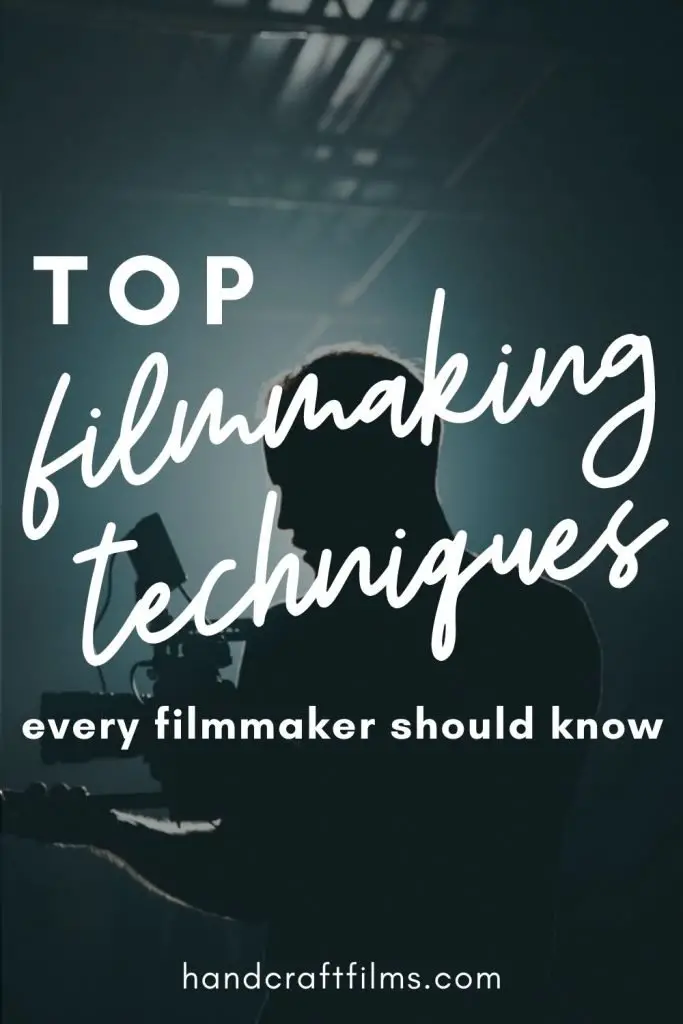Whether you’re a film student, a film enthusiast, or just curious to learn more for your own craft, knowing the basic building blocks that make up great films is essential to being a good filmmaker.
There are many filmmaking techniques involved in producing great films. Each of them has a purpose and will affect the way that the film’s story is told.
Most techniques used by filmmakers are executed quite purposefully in order to evoke certain emotions from the audience or to communicate a certain message about the film or a character in the film.
In today’s post, we’ll walk through some of the most common filmmaking techniques and how the use of these techniques work to enhance a film.
1 | Filmmaking Begins with Storytelling
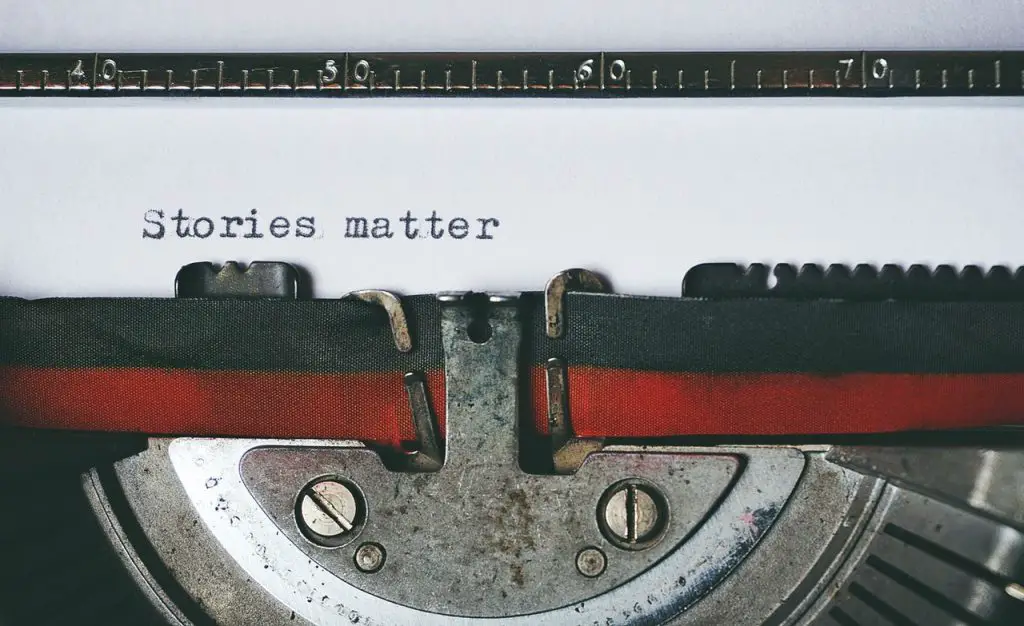
We often think of filmmaking techniques as camera movements, but there is so much more to it than that. Beyond camera operation (which we will get to in a minute), there are many other important techniques that filmmakers use. One of the most important is storytelling.
It doesn’t matter how skilled you are at every other technique on this list, if you can’t tell a story with your films that connects to your audience in a meaningful way, your films will never be great.
With every project that you produce as a filmmaker, the story should be at the forefront of your mind. If you have this part right, the rest of the techniques on this list can only make it that much better.
What do I mean when I say story? Not every film lends itself to telling a story in the traditional sense.
Of course it’s easy to imagine with a fictional film that the story is critical, but as you know, there are short commercials and promo videos, cooking videos, YouTube videos, as well as just videos we make at home for fun.
How do you craft a story with these types of videos?
Every Film Has a Story To Tell
Let me propose that even with all these various genres of filmmaking, each has a story to tell.
If you begin with a powerful story and execute it through whichever form of filmmaking makes sense for your project, it will far exceed the quality of a film that exists only of beautiful footage without any true thought behind it.
It’s the reason that Apple’s marketing has been so effective over the years. Instead of just telling you about how cool the iPhone (and every other Apple product) is, Apple used very specific branding to convey an emotional message to you.

In fact, very rarely does Apple air a commercial that says anything at all about the technical performance of the phone itself. Rather it cuts to the heart and desires of the audience. They promote the experience of owning an iPhone, not just the product itself.
Through storytelling, they connect with you, the audience, and make you feel that their product is the absolute best. Not only that but that it’s the one brand of phone we should all own. And guess what. Most of us now do.
So yes, while filmmakers utilize both our technical and artistic skills in order to create great videos, we have to dig even deeper than just those skills. Consider these questions.
Why You Are Creating This Film?
You should always being thinking about the purpose of the film. This is the deep why question that will give your film substance. It’s the meat of the story that transforms pure fluff of pretty images and video into a more meaningful message that connects with your audience.
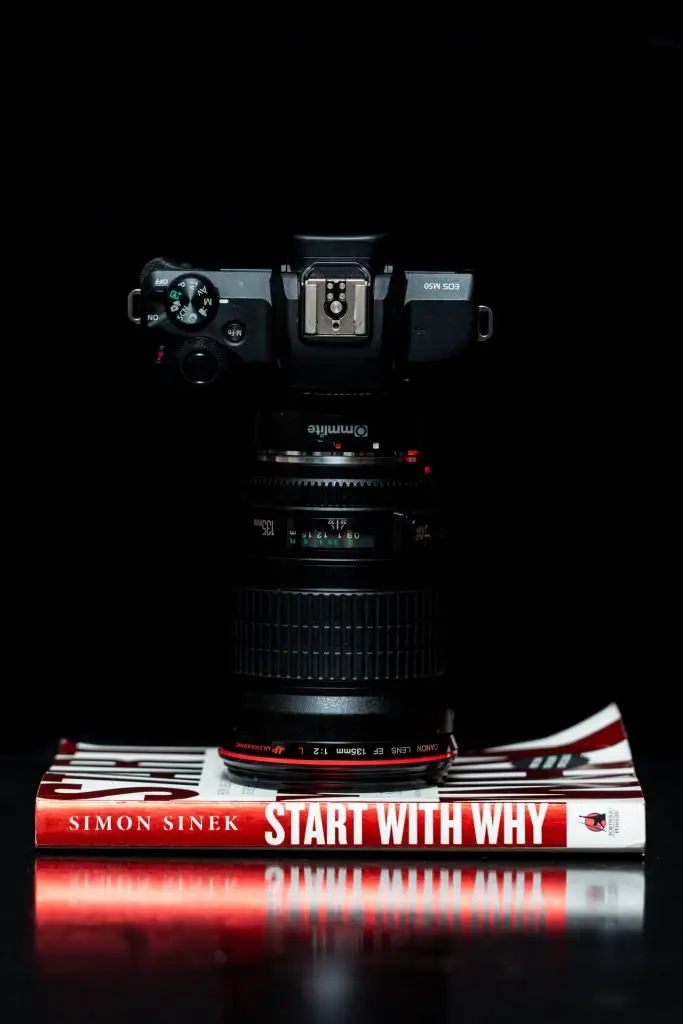
Even if your why is to sell a product or service, try to dig even deeper.
An Example: Promo Video for a Local Realtor
Perhaps you’re creating a promo video for a local real estate agent. Sure the most obvious why might be to make more people aware of the realtor’s name and ultimately for more people to use this realtor for selling or purchasing their own home.

However, if we dig a little deeper, we might find an even more powerful why.
Why do most people need a new realtor? They may be moving to a new town – there’s some uncertainty there. Or they might be expanding their family and need a bigger home – perhaps some urgency there. They may need to for financial reasons – urgency and fear there. The underlying tone here is uncertainty, fear, and urgency.
So now our core why becomes more meaningful. We are creating this video to convey to our audience not only that they should hire our realtor, but the reason why is because he (or she) is the most trustworthy, knowledgeable, reliable, hard working, etc.
Instead of purely introducing the realtor via interview or animated text, we craft a story that’s main purpose is to convey to potential homeowners that the character of our realtor is sound and they he or she will take care of these fears that every homeowner inevitably deals with.
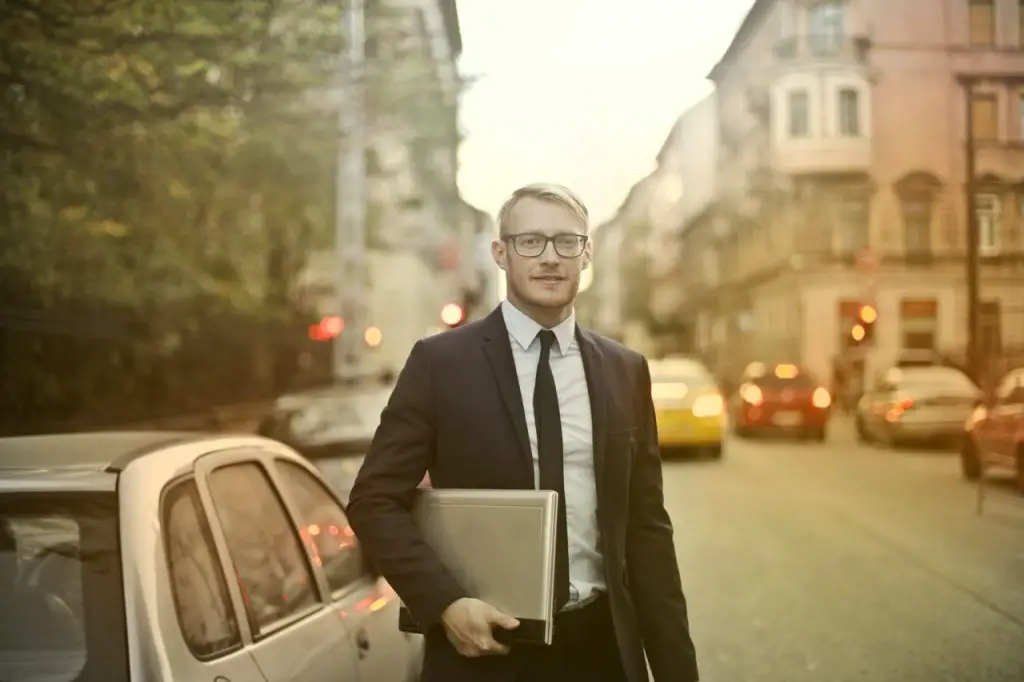
Maybe instead of placing your realtor in a traditional sitting interview, talking about qualities they can bring to the homeowners, you think in terms of a story that can show those qualities about the realtor in real life.
Now your promo video becomes more like a short documentary or day in the life of the realtor. Follow them around for a day. Capture their natural interactions with other homeowners. Emphasize how relatable and competent they are at their job.
Edit in sound bites from the families in the film talking about the qualities they enjoy about the realtor. Include funny moments with the realtor being a ‘real person’ that’s likable and relatable. Show a moment of conflict or confusion and then how the realtor resolves the situation.
In this way, we’ve connected with our audience on a deeper level and answered why this film was created. We’ve created a character (the realtor) and shown our audience why they would want to work with this person in a real life scenario.
The audience will be much more engaged watching an entertaining 3 minute documentary like this over a typical talking head promo video.
More details about specific storytelling techniques to keep the audience engaged in a moment.
Who Is Your Audience?
In order to sufficiently answer that why question, we have to consider our audience. Just like we discussed in the example above, oftentimes the answer to our why comes from analyzing our audience.
Think about the following:
- what are their greatest fears?
- what makes them excited?
- what brings them fulfillment?
- what injustices cause them to act?
These are just a few core questions about your audience that will often motivate them to take action or that will allow you to connect with them on a deeper emotional level through your film.
Once you’ve thought these questions through for your audience, you’ll have a more targeted approach to creating your film in a way that will truly resonate with your viewers – no matter the genre.
And the Plot Thickens
Finally, we get to the meat of our story: the plot. The plot is simply how our story will take shape.
Once you’ve analyzed your audience and the overall purpose of your film, you can begin to craft how the story should best be told.
The ideas are endless and it’s a chance to think outside of the box. That’s the beauty of filmmaking.
If you’re interested in reading further about crafting a story and more examples on how to do so, be sure to check out this post all about it.
Common Storytelling Techniques

Now that we’ve covered the basic building blocks to how to tell a story with film, let’s look at some of the storytelling techniques often used by filmmakers.
Foreshadowing
The use of foreshadowing draws your audience into your film by giving them just a taste of what’s to come without giving away too much just yet. It’s almost like playing hard to get. You give them just enough to be intrigued, but don’t give it all away just yet.
Some ways filmmakers express foreshadowing is through a series of close up shots where you don’t see the character’s face or perhaps you don’t see the entire action play out. Maybe that unfolds later in the film.
Another technique filmmakers use to foreshadow is by beginning the scene with a flashback. You see the final result and it may be confusing because you don’t yet know how the character got to this position yet.
A Relatable Character
Whether it’s a hero or a villain, great filmmakers can connect well with their audience by portraying characters that are complex. These characters are often empathetic, have both good qualities and bad, and seem very much like us, the viewer.
This is done for a purpose: to draw you in and make you feel as though you are part of the story. This makes you more invested, more engaged in the outcome of the story.
Transformation is Inspiration
I’m sure you’ve seen it time and time again. The story rises in conflict that doesn’t seem like it could ever be resolved. You stick around because you need to know how they ‘get out of this mess’. You’re hooked and next comes the transformation.
Perhaps it’s a documentary or inspirational story about weight loss, drug abuse, or something similar. You watch the character struggle and struggle until a transformation is made.
Because the filmmaker (if they are a good one) also portrayed the main character in a way that’s relatable (or at least empathetic) to you, by the end of the transformation you’ll also feel inspired to make a change in your own life.
The key technique here is to create an obstacle for the main character to overcome. What is the mountain that they need to climb or the vice that they need to defeat?
Create Suspense and Surprise
While it’s great and sometimes more fitting to tell a straight-forward beginning to end story, there’s nothing that holds an audience’s attention more than a bit of mystery.
This means we aren’t giving away all the answers with each shot. Very similar to foreshadowing, but can be developed a bit more throughout the film.
2 | Camera Settings Matter
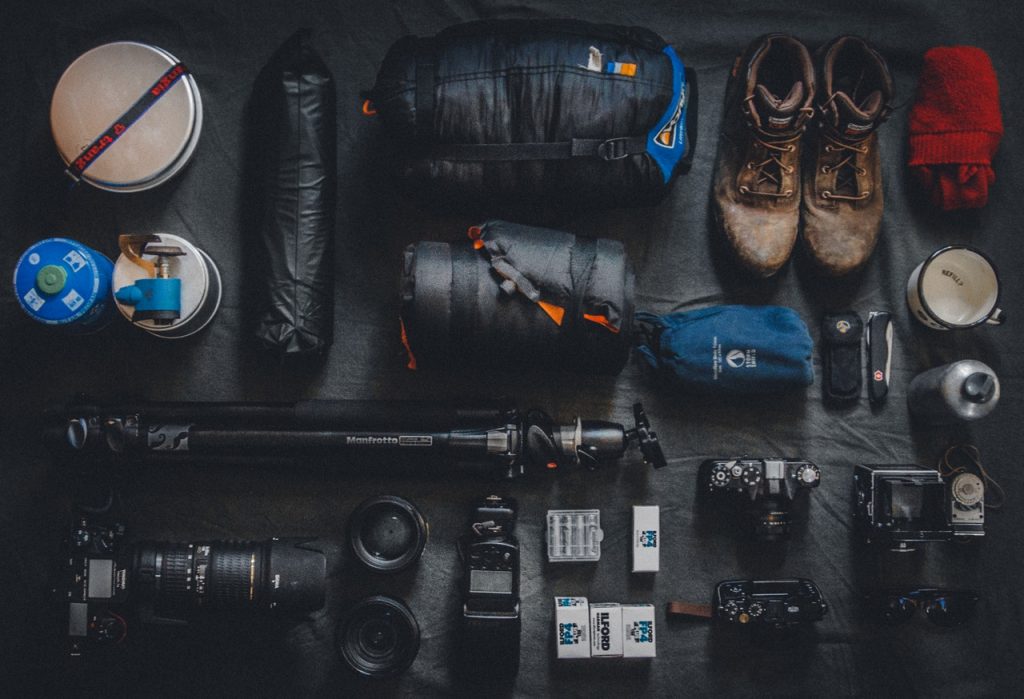
Know Your Gear
Once you’ve brainstormed your story and are ready to set it in motion, it’s time to shoot the footage.
Before any filmmaker can truly execute purposeful filmmaking techniques he or she needs to have a firm knowledge of how to operate their equipment.
Your equipment should become an extension of your brain. When you’re familiar enough with how it works, you won’t have to think twice about how achieve the shots that are in your head.
Remember that your equipment is a tool to execute what’s in your mind, not the other way around.
What’s some of the most important equipment to master?
First, your camera. In case you’re curious, here’s the camera I recommend to any filmmaker just starting out.
Second, at least one or two lenses. My recommendation is to start with a prime lens in the 24-35mm range. You don’t want to begin with a zoom lens for video because it will be much more difficult to eliminate hand shake.
Third, a stabilizer. This could be in the form of a simple tripod, a gimbal, or a monopod (if you need something very slim). It’s simply any tool that will eliminate hand shake and make your shots smoother.
Third, lights. These aren’t a necessity if you’re on a tight budget or just starting out. You can get just about all the shots you’ll need using available window light or sunlight outside. However, if you do decide to invest in some versatile lights for video interviews or YouTube shoots, here are some I would recommend.
Know Your Settings
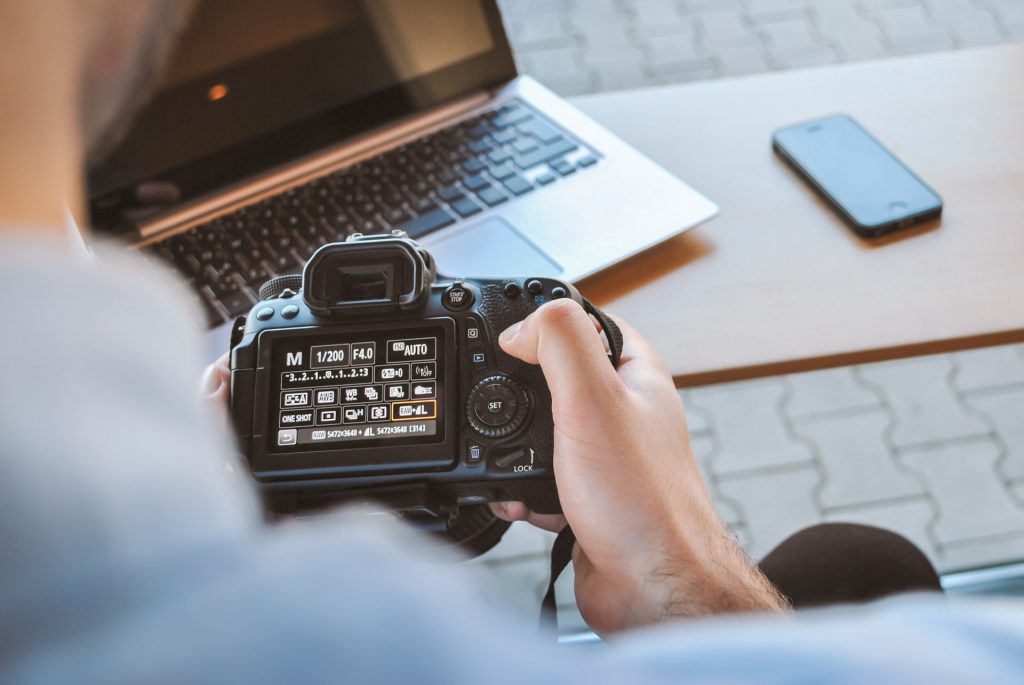
Now that we’ve covered exactly what type of equipment you need to start filmmaking, let’s talk about mastering manual mode.
When I bought my first dslr many years ago, I remember the disappointment I felt with those first few shoots. Here I’d spent all this money on a nice camera and it wasn’t producing shots like I’d expected.
What did I do wrong? Did I pick the wrong camera?
Definitely not. I simply didn’t know how to operate that camera to its full capacity. Those first few shoots while I was still learning the basics of camera operation, I was shooting in automatic mode or some version of it.
I wanted the background to be blurry and my subject in focus, but instead my subject was blurry. What was I doing wrong?
Now that I know a thing or two I could tell you that my aperture was too narrow and I didn’t have enough available light.
But before I learned the basics of camera operation, I was at the mercy of my camera knowing what to do.
Mastering Manual Mode
As smart as cameras have become, they can’t read your mind.
Once I learned exactly how to operate my camera and moved into shooting in manual mode, my photos and videos improved DRAMATICALLY.
Instead of fumbling around all the buttons and trying to figure out how to make each shot better, I am so in tune with my camera and with the fundamentals that I can instantly change my settings how I need them at all times.
And contrary to what you may think, it’s really not hard to master. It simply takes a few hours of concentration to understand how cameras operate and work with light, plus some time getting out and practicing with your camera in hand.
If you’re not there yet, but you want to be, check out this post all about mastering manual mode. It will explain it all in great detail.
Here are a few filmmaking techniques that are achieved specifically by using certain camera settings.
Shutter Speed
The shutter speed setting on your camera can dramatically change the look and feel of your film.
For example, if you are shooting lots of quick motion, high action scenes, you’ll need to shoot in a high shutter speed. This will give your film a glitchy, high adrenaline feel. Something around 1/120 or higher.
However, if you want your film to look like real life, with the slightest bit of natural motion blur, you’ll want your shutter speed to stay in the range of 1/60 per second.
Aperture
Aperture is simply how wide your lens is opening up to let light in. The wider your aperture, the less depth of field your frame will have.
With a shallow depth of field, you’ll be able to isolate your subject more clearly by keeping them in focus while the background is blurry.
On the contrary, with a narrower depth of field you can keep all objects in your frame in focus.
Several of the cinematography techniques, including rack focus, that we are about to cover rely on having a certain depth of field.
Without a firm knowledge of aperture and how to set your camera settings, you can’t execute these filmmaking techniques.
If you still feel that you need a refresher on camera settings and mastering manual mode, be sure to read up on this article first.
3 | Cinematography Techniques
Now we get the more juicy filmmaking techniques involved in production and direction. These include examples of how we can set up shots, capture motion and action, as well as direct our talent.
Furthermore, by using certain filmmaking techniques, you can evoke very specific feelings from your audience that will draw them in and make your story more powerful.
Here are several examples of filmmaking techniques that will facilitate in telling your overall story by conveying a certain emotion to your audience.
Blocking
What is blocking?
Blocking is the very intentional method in which a filmmaker places objects of interest in a scene to direct the audience’s attention in a certain way.
The various styles in which the filmmaker utilizes blocking will result in very different feelings for the audience.
I bet you haven’t even noticed many of these, but pay attention next time you watch a great film and you’re sure to spot a few of these brilliant filmmaking techniques in action.
Here are the main ways in which a filmmaker often uses blocking.
Shapes:
Circles are harmonious and give the audience a feeling of peace and completion. When characters are placed in a circle, the film feels more relaxed and in balance.
Squares are often used in framing subjects in a way that makes the audience feel as though they are trapped or boxed in. This can also be a technique that filmmakers achieve by framing with doorways, hallways, and other common surroundings.
Triangles connote conflict and climax, with a clear apex at the top. You’ll often spot triangles in scenes of great suspense.
Space:
Pay attention to the space the filmmaker places between two objects or subjects in a scene. How far apart are they? This can communicate to the audience either intimacy or isolation. Does the spacing change throughout the scene?
Is one character closer to the camera or further away? This can be used to give one character power over the other or to make one character more relatable and ‘transparent’ than the other.
Lines:
Lines can be used to draw the audience’s eye in a certain direction. We call these leading lines. They can be created by walls or other natural surroundings and work to tell the audience literally where to look.
Establishing Shots
With any film, you need to ‘set the stage’ for your audience. You may simply set the stage right off the bat with an exterior shot of a building or house before moving inside with the next shot. This is an establishing shot. It tells your audience exactly where they are in the film.
However, if you intend for your film to build in anticipation, you may choose an establishing shot that is a bit less clear from the start, but that includes clues as to your films location as the film progresses.
Framing and Composition
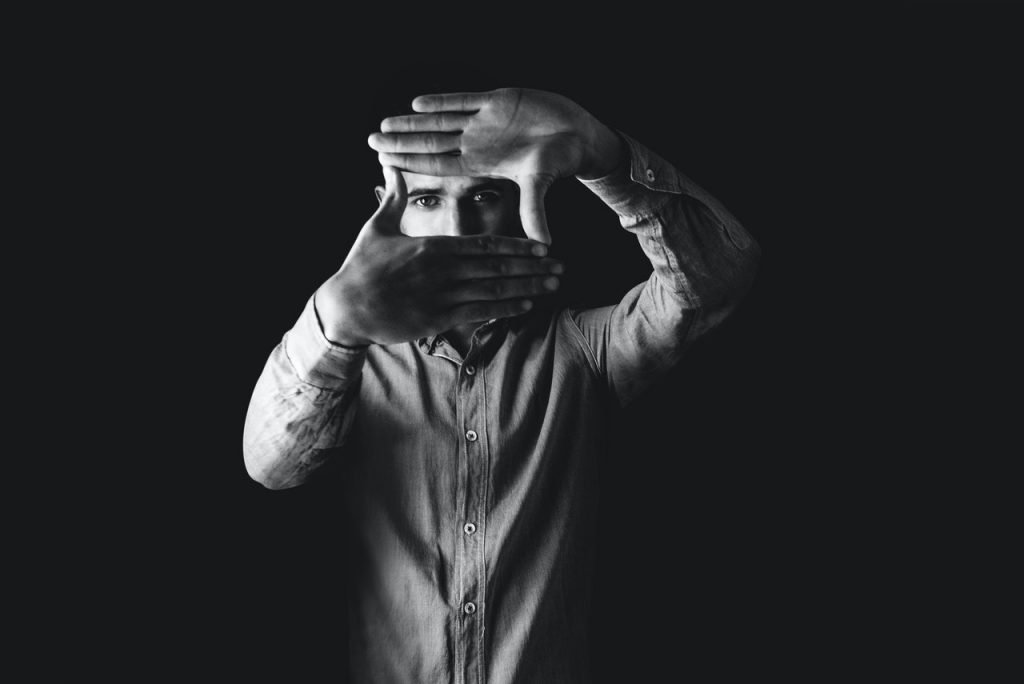
In general, most filmmakers follow the rule of thirds. With this rule of thumb, the subject of interest is placed on a leading line within the segments of thirds. Shots that follow this rule will feel natural and harmonious to the eye.
However, rules are made to be broken. This is the case with famous filmmakers like Stanley Kubrick and Wes Anderson, where they often place their subject directly in the middle of the frame.
This technique places extra emphasis on the subject in the middle of the scene and often feels somewhat quirky. It can also give the character a feeling of isolation or special interest.
Use of Objects in Foreground
By allowing other objects to be in the frame, but out of focus, within your shot can convey a sense of depth to the shot. It can also add context about your character’s surroundings.
Rack Focus
Rack focus is a camera technique that involves shifting the focus from one object to another. This is often done during an exchange between two people, from one person’s face to another.
However, it can also act powerfully in film to reveal a certain message to the audience. Perhaps to clue them in to some fact in the film, like an object on a table or to reveal some information that a character didn’t see.
Importance of Camera Framing
Depending on the camera lens and proximity to the subject in the frame, the framing of each shot can have a dramatic affect on the emotions a film conveys to it’s audience.

Here are some of the most coming types of camera framing and what types of feelings they often communicate to the audience.
Wide Shot: As it sounds, this is a shot that includes a wide frame of view. Wide shots are perfect for including a lot of information about the setting and for that reason they are often used as great establishing shots.
A wide shot of a character that appears small in the screen can evoke the feeling of loneliness or isolation.
Medium Shot: Closer than a wide shot, but not yet a close up. A medium shot could be described as the most comparable to what your naked eye sees.
For this reason, a medium shot is often used in documentaries where you want your audience to feel like they are there with you. Because medium shots are so similar to what we see with our own two eyes, it conveys a feelings of being present with the reality of the scene.
Close Up Shot: A close up shot is typically from the chest or neck of a person to the top of their head. The feeling conveyed is one of intimacy with the character in the scene. If the shot is of an object, a close up communicates important details about the object.
In many films, you’ll notice a series where the shots may begin wide and then progressively move closer and closer to a subject in the frame. This often happens during conversation or dialogue, when the director wants you to feel more and more connected to the subject in the scene.
When a character’s face takes up the entire screen, it can also evoke a feeling of power or strength from that character.
Significance of Camera Angles
Tilted Camera Angle: A tilted camera angle will give the impression of uncertainty and unease to the audience. This can be used to create suspense in a scene.
Camera Angle Low to the Ground: When the camera is place on or low to the ground, it gives the subject a feeling of grandeur or strength. It’s also an interesting perspective for objects in motion, such as footsteps or a car driving by.
Because not much is included in the frame other than a small portion, this type of shot also builds anticipation at what’s to come.
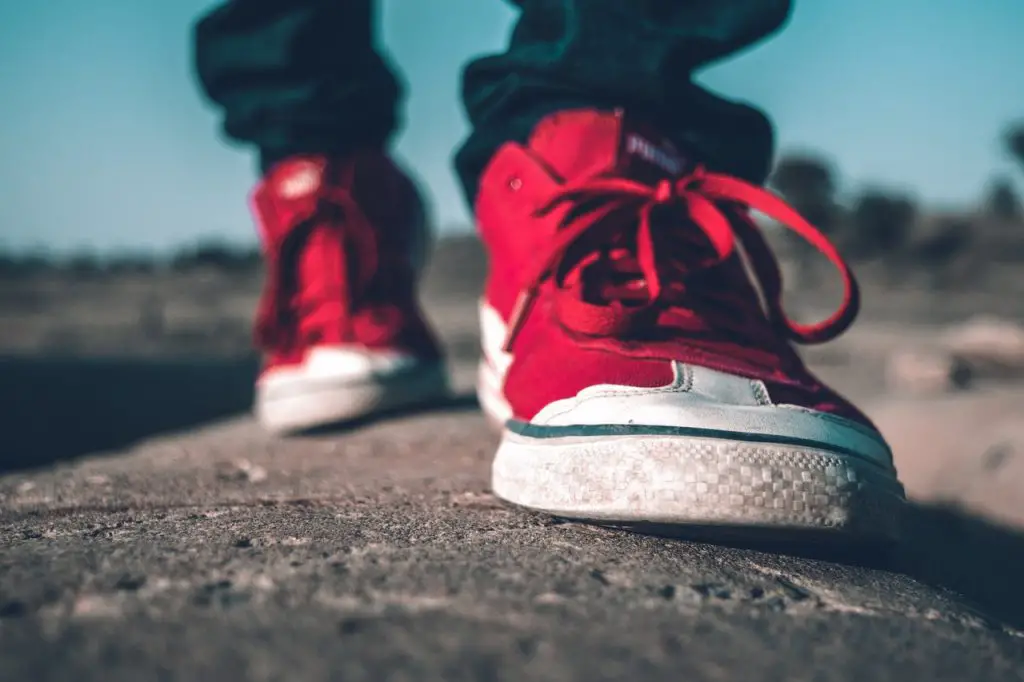
Overhead or Bird’s Eye View: This gives the audience a feeling of omnipotence or of superior knowledge about what’s about to happen in the film. It can also work as a great establishing or transitional shot to the next scene.
Use of Camera Motion
The many ways in which a filmmaker creates movement in the scene, either from the subject itself or from the camera, can be a powerful filmmaking technique.
Let’s dissect a few commonly used camera movements and how they translate to the audience.
Camera Shake: The most obvious example of this movement is from the film, the Blair Witch Project. Remember that one? It brilliantly evoked feelings of unease and fear, while simultaneously making you feel like you were there with the characters.
It’s often used as a filmmaking technique to pull the audience into the action and include you in the scene. It’s mainly used in high action, suspenseful themes.
Following a Character: You most often see this filmmaking technique in documentaries and vlogging type videos. It’s simply the camera literally following a character while walking, driving, working, etc. It gives the feeling that you are there in the scene with the character, thus making them more relatable and you as the audience, more invested.
Concluding Thoughts
Remember, these common filmmaking techniques mean nothing if they aren’t paired with intention from the filmmaker.
I hope studying these techniques has motivated you not only to discover more of them as you watch great films, but also to get out and use them in your own films as well.
I’d love to see what you come up with. Please share with us in the comments below and be sure to subscribe to the newsletter for more articles all about filmmaking.
Happy Shooting
-Beth
Thanks for checking out a few of my favorite things. As an affiliate, I receive compensation for mentioning my favorite resources, however any commission that I earn comes at no cost to you. In fact, it goes right back into maintaining this website so I can continue to offer fresh content. Thanks as always for your support!
Share on Pinterest:
